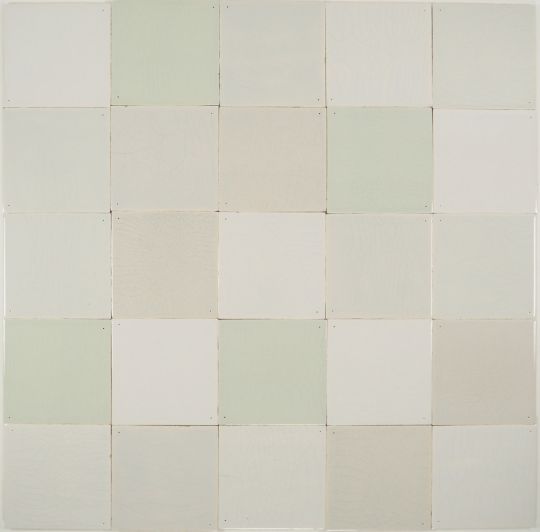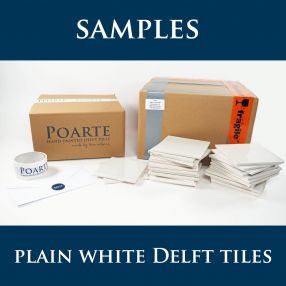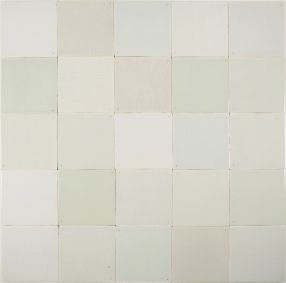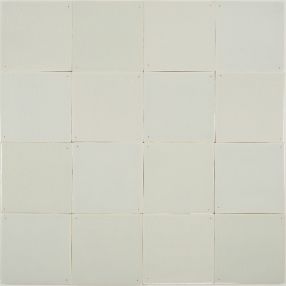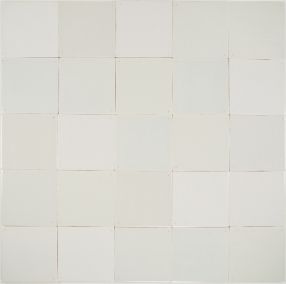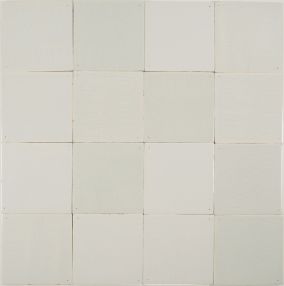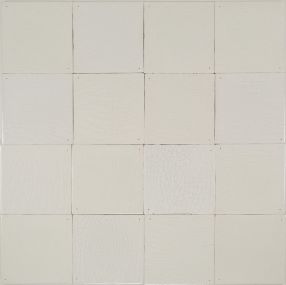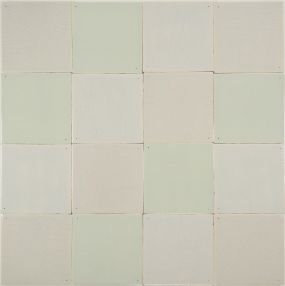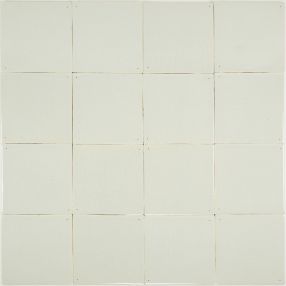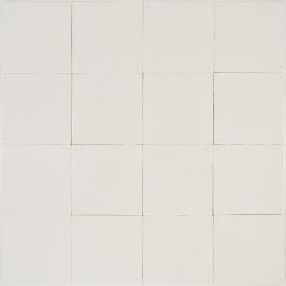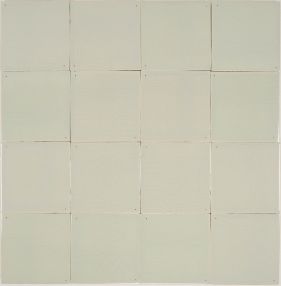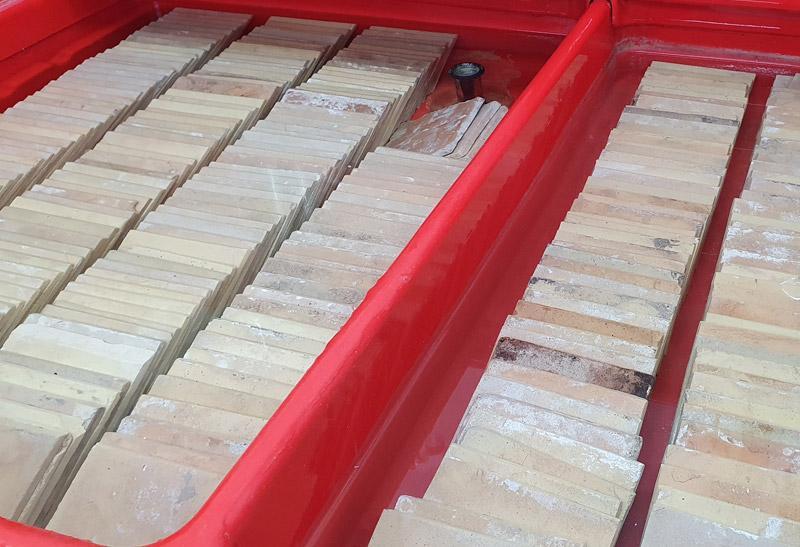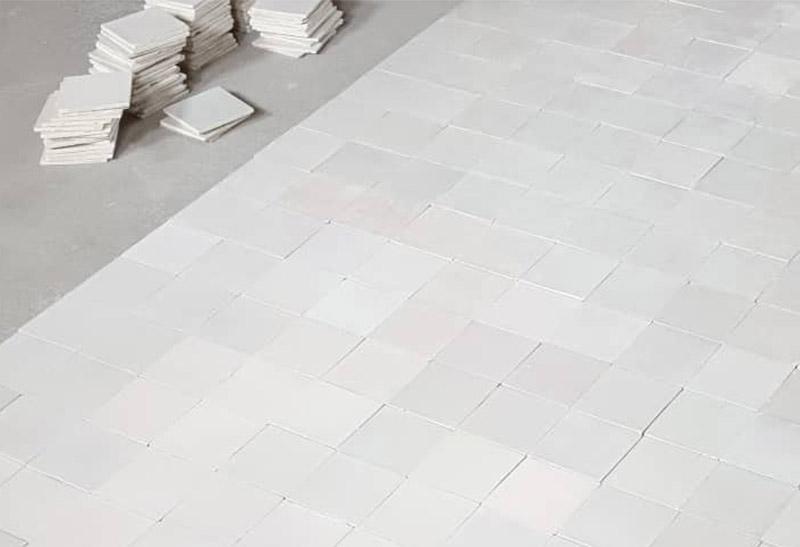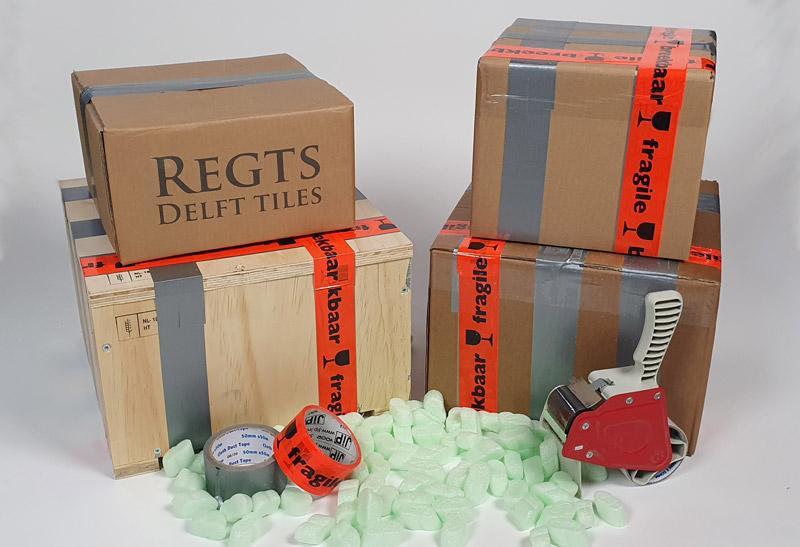Overview
Colourful mix
The Colourful Mix by Poarte offers a bold yet balanced ensemble of six classic white shades, featuring subtle tones of grey, white, and green. These tiles serve as a base for our hand-painted decorated Delft tiles, but they also stand out beautifully on their own.
The first photo shows the mix with both crackled finish and pinholes, while a later image shows it without. You can mix and match these options however you like, everything’s fully customisable.
Please note that photos may not always represent the shade accurately due to lighting and screen differences. To experience the true color and texture, we recommend ordering our sample package, which includes all white shades along with finish options. For a custom sample package, please contact us.
Pinholes in the corners
Pinholes were part of the tile production process before 1860. A wooden board was used to stabilize the clay during cutting, leaving small pin marks, typically two, three, or four. This enhancement can be added to these tiles to recreate this authentic imperfection, contributing to their historic look and feel.
Crackled finish
Crazing refers to the fine network of hairline cracks that appear over time on antique ceramics, including Delft tiles. It occurs naturally with age, but we offer it as an optional finish to evoke the same aged appearance. If you're looking for a more antique, timeworn look, the crackled finish is a perfect match for this series.
How to order these tiles?
You can request a quote on this page or contact us through our contact page by filling out the contact form or sending us an email.
Product disclaimer
These Delft tiles are produced using traditional methods, leading to slight variations in color, size, and design. These natural differences enhance their authenticity and character. While not machine-made to uniform precision, each tile meets high-quality standards and is suitable for many indoor installations. With proper care, these tiles can last for decades.
SAMPLES of our newly made plain white Delft tiles can be ordered here. For a custom sample package, please contact us.
The Colourful Mix by Poarte offers a bold yet balanced ensemble of six classic white shades, featuring subtle tones of grey, white, and green. Developed with inspiration drawn from 17th-, 18th-, and 19th-century Delft tiles, these hues evoke the timelessly imperfect look Delft tiles are known for but in a more understated manner than the All-in Mix. Adding the optional pinholes and crackled finish (detailed below) further enhances the tiles’ aged, authentic quality, delivering a refined touch to a variety of indoor spaces.
The first photo features the Colourful Mix with both pinholes and the crackled finish, while the overlay images show the base version (no enhancements) alongside a 16-tile selection with enhancements. For additional information on these options, please see below or review the specifications tab.
Pinholes in the corners; In the past (prior to 1860), a wooden board fitted with pins secured clay tiles during cutting, leaving small holes in the corners. Reintroducing two pinholes per tile captures the mildly imperfect charm historically associated with Delft tiles.
Crackled finish; Over decades or centuries, Delft tiles commonly develop fine cracks, known as crazing. Choosing our crackled finish replicates this naturally aged aspect. If you prefer a smoother appearance, you may opt out of this enhancement.
How to order these tiles?
You can submit a quote request directly on this page or contact us via our contact page by filling out the contact form or or sending an e-mail.
How to order samples of these tiles?
Our standard sample package is available here. It features all of our white shades, details on available enhancements, and examples of both a bullnose and corner (double bullnose) tile. For a custom sample package, please get in touch through our contact page.
Product disclaimer
These Delft tiles follow traditional methods, which may result in subtle variations in color, size, and design. While they are not entirely uniform like machine-produced tiles, we maintain a high standard of quality. Suitable for many indoor installations, they can endure for decades—potentially even centuries—imbuing your space with the enduring appeal of Delft craftsmanship.
Buyers information
Specifications
| Inventory number | Colourful mix |
|---|---|
| Tile type | Wall tile |
| Tile size (approx.) | 13 by 13 cm's / 5.1" by 5.1" |
| Tile thickness (approx.) | 0.7 cm's / 0.3" |
| Quantity per M2 / SF | 60 tiles per m2 / 5.5 tiles per SF |
| Decoration technique | Hand-painted |
| Shade(s) of white | Poarte - A, B, C, D, E & H |
| Shade consistency | Read more about this on the product page of each shade of white. |
| Suitable for | Walls, kitchens, backsplashes, ceilings, fireplace surrounds, fireplace interior (when not exposed to open fire), bathrooms, wet-rooms. |
| Not suitable for | Floors, open fire, outdoors and swimming pools. |
| Sealer | The tiles do not require a sealer from a functionality perspective. In wet rooms one may decide to use a sealer to prevent natural crazing. |
| Pricing | Per tile |
| VAT and/or Import duties | Prices of the reproduction tiles are excluding 21% VAT (only applies to private individuals buying from within the European Union). Any order from outside the European Union is without VAT, but customs will charge VAT and/or import duties instead. |
| Made in | the Netherlands, by Poarte |
| Installation guide | Download |
About Regts - Delft Tiles
We are a family firm specialized in Delft tiles. Our stock covers the entire production period, which started around 1570 and ended just after 1900. If you are interested in working with us, please always feel free to get in touch.About usContact us
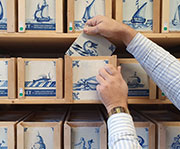

 10 out of 10
10 out of 10